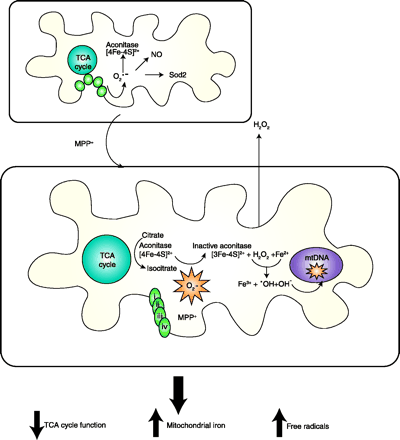
- Institution: Stanford Univ Med Ctr Lane Med Lib/Periodical Dept/Rm L109
- Sign In as Member / Individual
ROLE of MITOCHONDRIA in TOXIC OXIDATIVE STRESS

Proposed scheme of events in MPTP-induced mitochondrial O2·−toxicity via oxidative aconitase inactivation. The fate of mitochondrial O2·− is normally controlled by its reactivity with several targets that include Sod2, nitric oxide NO, and Fe-S centers. Elevated steady-state mitochondrial O2·− production resulting from Complex I inhibition by MPTP’s active metabolite, MPP+, would favor oxidative inactivation of the [4Fe-4S]2+-containing aconitase and simultaneous release of Fe2+ and H2O2. Subsequent generation of HO· via Fenton chemistry could damage mitochondrial proteins, DNA, and lipids thereby amplifying O2 −initiated oxidative damage. Additionally, the release of Fe may affect cellular iron homeostasis and decreased aconitase activity could interrupt its TCA cycle function. Adapted from (137).


